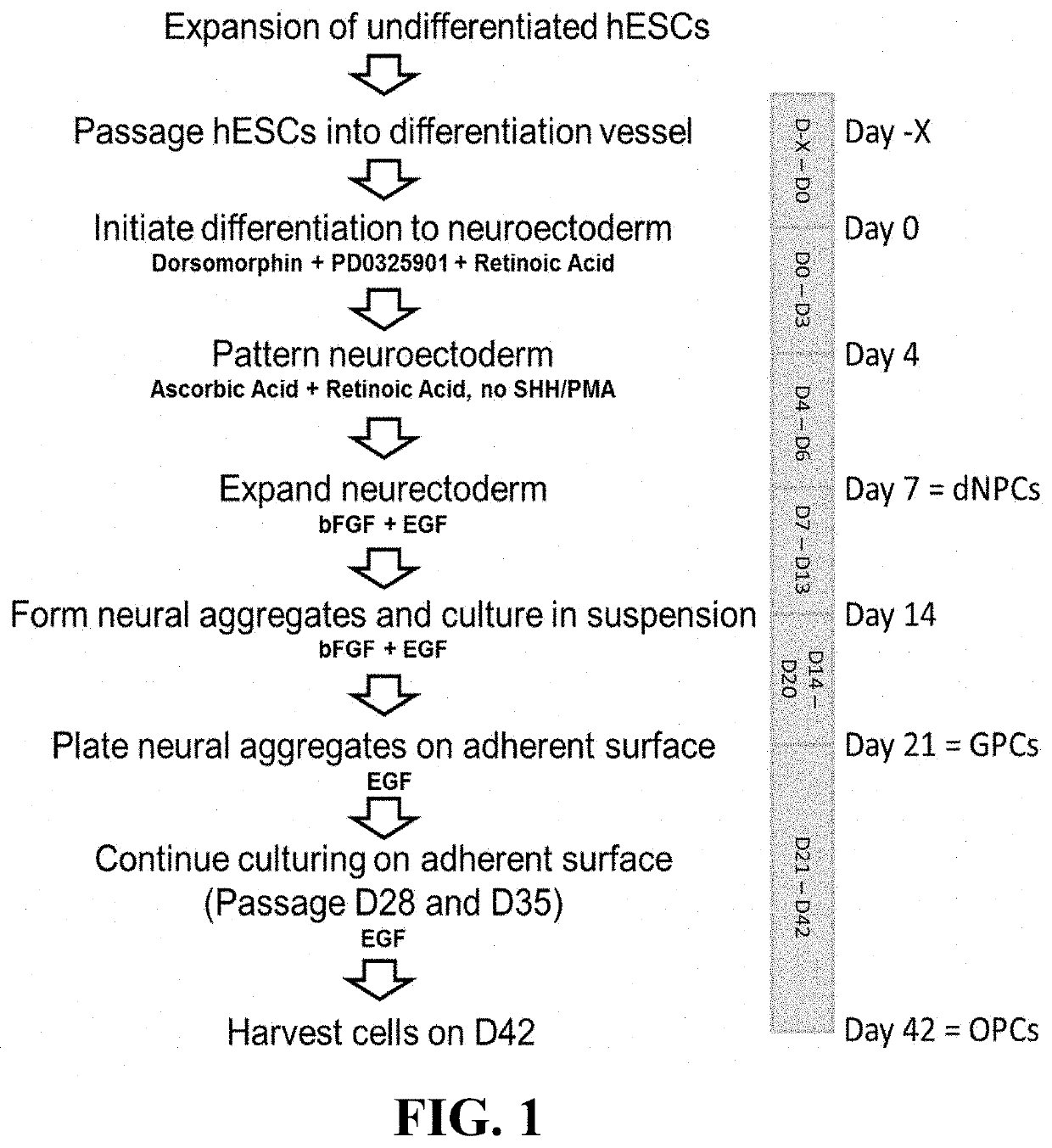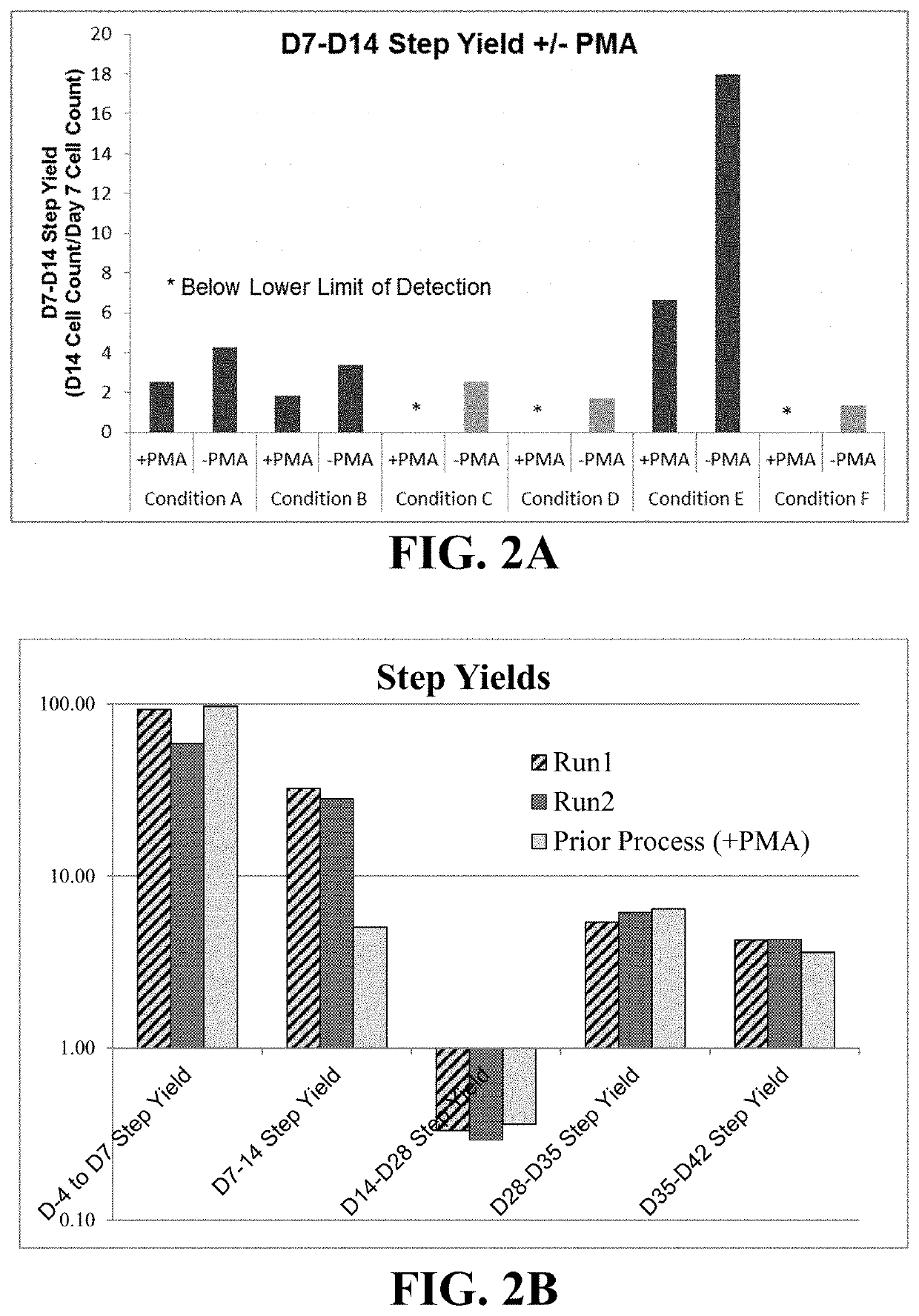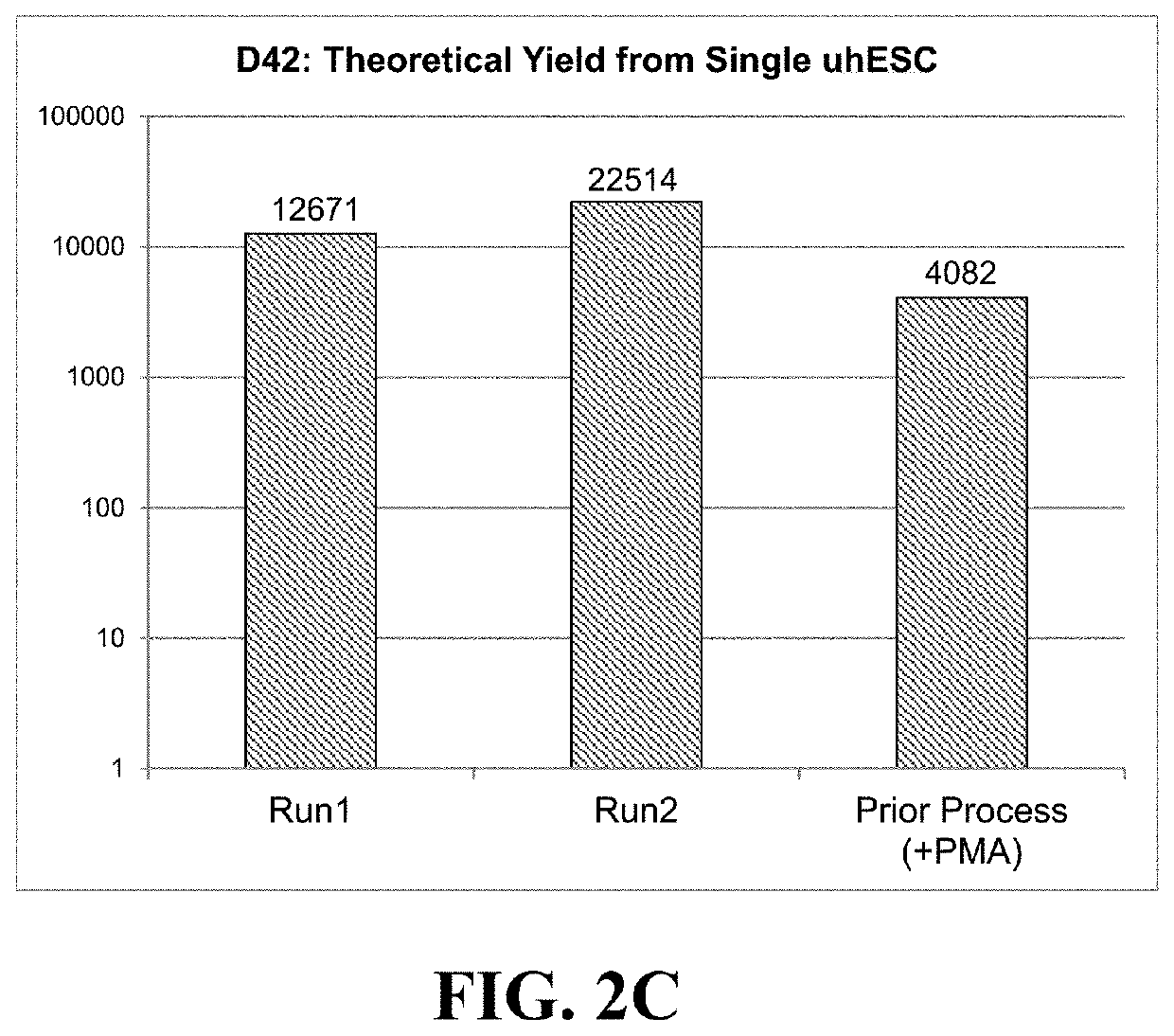Dorsally-derived oligodendrocyte progenitor cells from human pluripotent stem cells
- Summary
- Abstract
- Description
- Claims
- Application Information
AI Technical Summary
Benefits of technology
Problems solved by technology
Method used
Image
Examples
example 1
nd Expansion of Undifferentiated Human Embryonic Stem Cells
[0136]Undifferentiated human embryonic stem cells (uhESC) from a working cell bank (WCB) generated from the H1 line (WA01; Thomson J A, Itskovitz-Eldor J, Shapiro S S, Waknitz M A, Swiergiel J J, Marshall V S, Jones J M. Embryonic stem cell lines derived from human blastocysts. Science. 1998 Nov. 6; 282(5391):1145-7) were cultured on recombinant human Laminin-521 (rhLn-521, Corning #354224) coated, tissue culture treated polystyrene T-75 culture flasks (Corning #431082) in complete mTeSR™-1 medium (Stem Cell Technologies #85850). The medium was completely exchanged daily until the cells reached approximately 80-90% confluency, and uhESCs were then passaged using ReLeSR™ reagent (Stem Cell Technologies #05872). ReLeSR™-lifted uhESC cells were seeded in new rhLn-521 coated 225 cm2 flasks, and daily medium exchange was resumed two days post-seeding. Cultured uhESCs from the WCB were expanded in this manner for between two to fi...
example 2
Differentiating Human Embryonic Stem Cells to Neuroectoderm Progenitors with Dorsal Spinal Cord Progenitor Phenotype
[0137]Expanded uhESC were seeded on rhLn-521-coated vessels, and cultured until reaching 40-70% confluency at which point differentiation was initiated.
[0138]Days 0-3:
[0139]Differentiation was initiated by complete removal of mTeSR™-1 medium, and addition of Glial Progenitor Medium (GPM; consisting of DMEM / F12 (Gibco Catalog No. 10565-018) supplemented with 2% B27 supplement (Gibco Catalog No. 17504-044), and 0.04 μg / mL tri-iodo-thyronine (Sigma-Aldrich Catalog No. T5516-1MG)) supplemented with 10 μM of MAPK / ERK inhibitor, PD0325901 (PD; Sigma-Aldrich Catalog No. PZ0162), 2 μM of BMP signaling inhibitor, Dorsomorphin (Dorso; Sigma-Aldrich Catalog No. P5499), and 1 μM of Retinoic Acid (RA; Sigma-Aldrich Catalog No. R2625). This medium was replenished daily.
[0140]Days 4-6:
[0141]On Day 4, culture medium was switched to GPM supplemented with 1 μM RA and 150 μM Ascorbic Aci...
example 3
Differentiating Human Embryonic Stem Cells to Glial Lineage Cells
[0144]Days 7-13:
[0145]Differentiation of uhESCs to neuroectoderm progenitors, specifically of a dorsal phenotype, was performed as described in Example 2. On Day 7, the cells were lifted using TrypLE™ Select (Thermo Fisher, cat # A12859-01), counted, and seeded onto rhLn-521-coated vessels at a seeding density of 2.7×104 cells / cm2 in GPM supplemented with 20 ng / mL human basic fibroblast growth factor (hbFGF, Thermo Fisher, cat # PHG0263), 10 ng / mL epidermal growth factor (EGF, Thermo Fisher, cat # PHG0311), and 10 μM Rho Kinase Inhibitor (RI, Tocris Catalog No. 1254). Culture medium was replenished daily by aspirating spent medium and replacing it with fresh GPM+hbFGF+EGF.
[0146]Days 14-21:
[0147]At Day 14, cells were lifted using TrypLE™ Select, counted, resuspended in GPM+hbFGF+EGF+RI, and reseeded in dynamic suspension cultures at a density of 1.83×106 viable cells / mL into either PBS-0.1L or PBS-0.5L Mini Bioreactor S...
PUM
 Login to View More
Login to View More Abstract
Description
Claims
Application Information
 Login to View More
Login to View More - R&D
- Intellectual Property
- Life Sciences
- Materials
- Tech Scout
- Unparalleled Data Quality
- Higher Quality Content
- 60% Fewer Hallucinations
Browse by: Latest US Patents, China's latest patents, Technical Efficacy Thesaurus, Application Domain, Technology Topic, Popular Technical Reports.
© 2025 PatSnap. All rights reserved.Legal|Privacy policy|Modern Slavery Act Transparency Statement|Sitemap|About US| Contact US: help@patsnap.com



